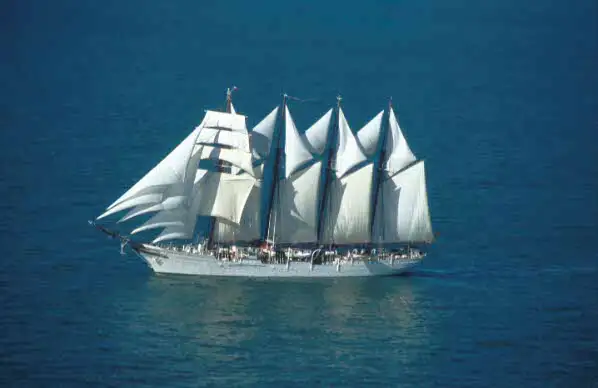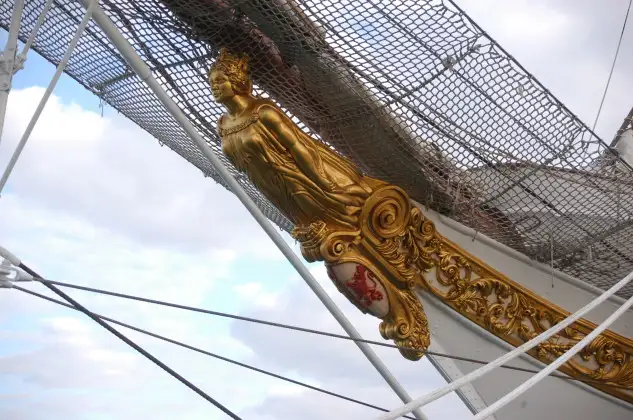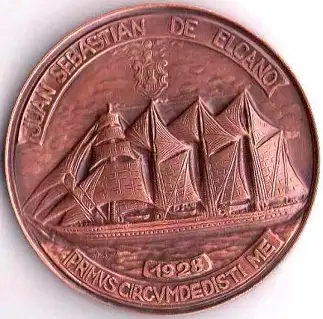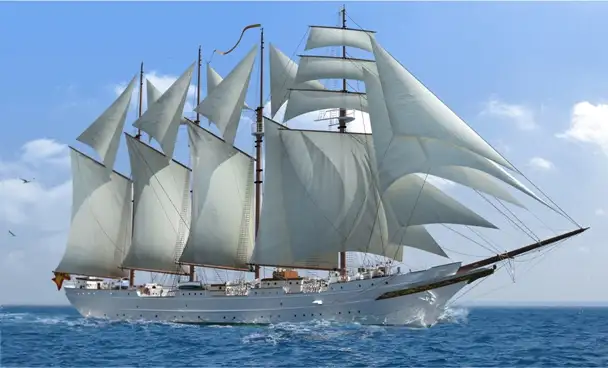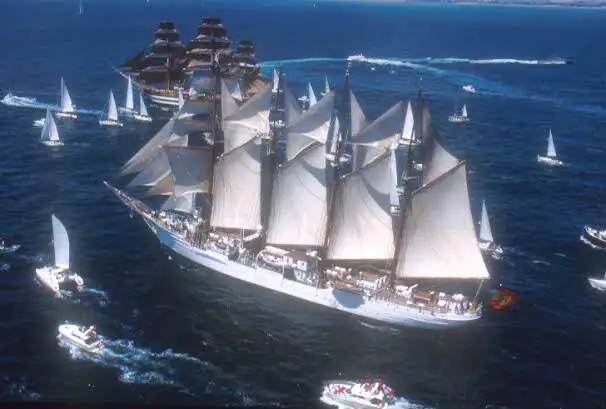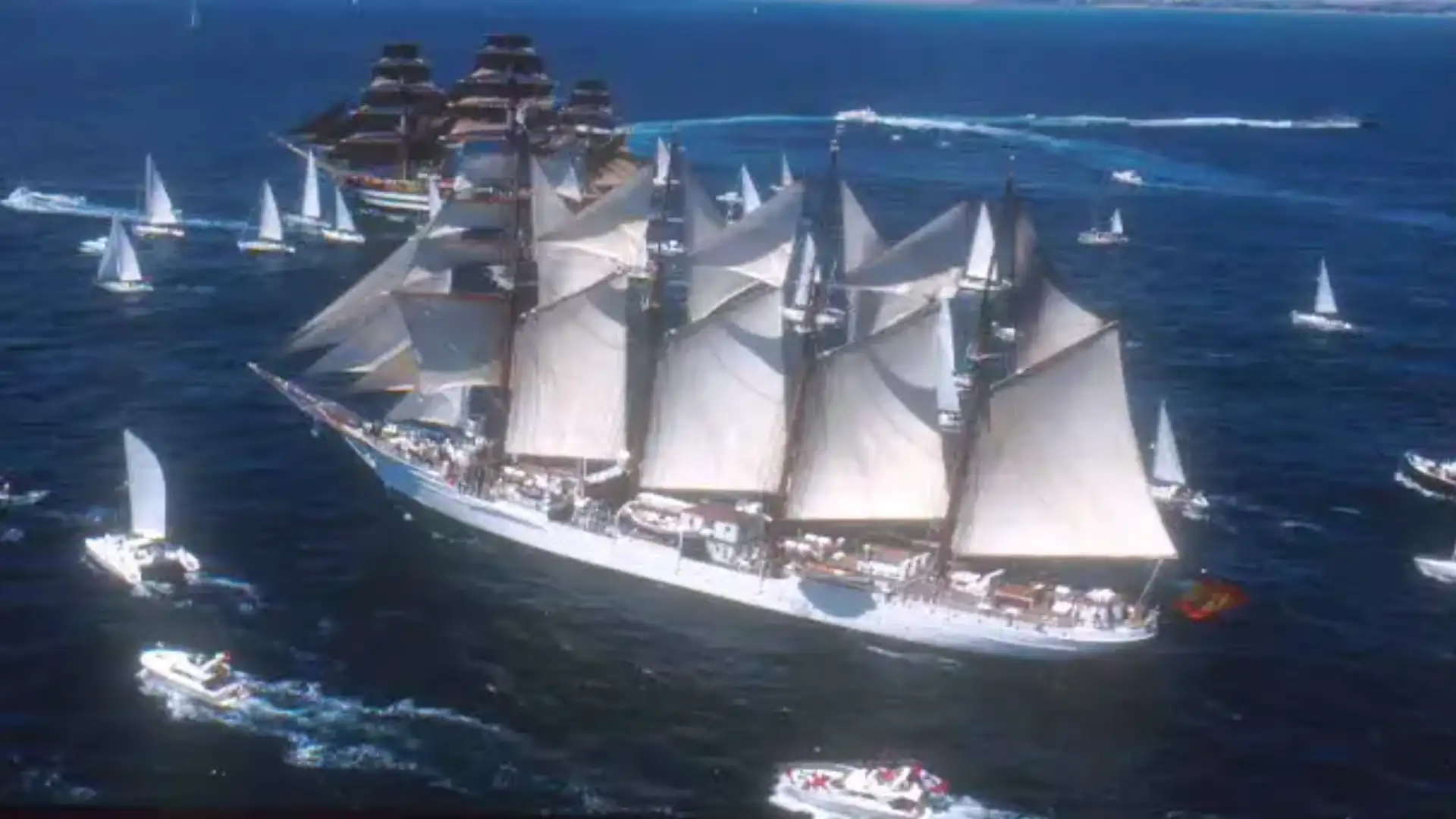
Juan Sebastián Elcano: formation of sailors and pride of Spanish sailors.
Juan Sebastián Elcano: formation of sailors and pride of Spanish sailors.
Before even the ships that preceded him in his mission, there is no doubt that the true precursors of the "Elcano" were the Guardiamarines, whose formation is the reason for being the main and primary purpose of this ship. Officially, the Guardiamarinas acquire this name and condition as "Official Future Students" with the establishment of the Royal Marine Guards Company in Cadiz in 1717, created under the impulse of the Indendente Don José Patiño during the reign of Philip V, the first Spanish King of the current Bourbon Dynasty.
It is therefore to Cadiz, a marine city by anthonomasia and whose eyes of silver will see for the first time the "Juan Sebastián de Elcano" School Ship born more than 200 years later, the honor of being the first to welcome the first Guardiamarinas. From the beginning the Royal Marine Guards Companies - the one already mentioned in Cadiz and two more of new creation, those in Ferrol and Cartagena - gave great importance to the practical training of their students. Not in vain, of the eight years that his teaching lasted until he reached the employment of Ensign de Navío, six were held on the various ships of His Majesty, where the Commander and the Officers were their teachers in the profession.
However, it is not until 1862 that the concept of a unit for the formation of the future officers, the date on which the Fragata "Esperanza" - the most remote antecedent of our "Juan Sebastián de Elcano" - is intended for this purpose along with the Corbetas "Villa de Bilbao," "Santa María" and "Trinidad." The latter was replaced in 1874 by the "White" frigate until 1881, and the "Almansa" and the "Asturias." In 1886 the Corbeta "Nautilus," of all of them the most emblematic and immediate predecessor of the "Elcano," began this work. He made his first trip with Marine Guards in 1888 under the command of Fragata Captain Fernando Villaamil.
In 1910, the "Nautilus" ceased to be a school ship for Marine Guards, and in 1933, the last Commander of Fragata D. Manuel de Mendívil Econo, who later became the first Commander of the "Juan Sebastián de Elcano." As a result of the fall of this unit in 1910, the Navy is in a large functional vacuum. Although with their disappearance, the officers continue to do their practices on in-service ships, they do not meet the specific specifications of instruction that he had. It was therefore necessary to build a new ship that was useful for such a task, while emulating the glorious circumnavigation of the "Nautilus" in 1892.
During the interval from the dismantling of the "Nautilus" to the entry into service of the "Elcano," the Marine Guards sailed on the cruises "Carlos V," "Reina Regente" and later on the "Catalonia" in which they jointly embarked Marine Guards and Aspirants. The "Elcano" project began to take shape in 1923, when on April 6 the Ministry of the Navy signed a contract with Mr Horacio Echevarrieta and Maruri to enable the "Minerva" motor boat as a ship of Marine Guards. The following year, a Royal Decree of 30 June authorizes the Ministry to renew the contract to build a new vessel for this purpose.
The project was already under way. Once the Navy gave its approval, a new "Minerva" was arranged for construction under the project of the English engineer, Mr. Charles V. Nicholson in the Echevarrieta and Larrinaga shipyards of Cadiz, and the keel was placed on 24 November 1925. The event was attended by Infante D. Carlos, General Primo de Rivera, Captain General de Cadiz D. Pedro Mercader and other authorities. During the same time, Don Horacio Echevarrieta expressed to General Miguel Primo de Rivera his desire that the ship be named "Juan Sebastián de Elcano." He promised to request this request from King Alfonso XIII, and finally to prosper his proposal. Under this name, arising from a conversation between the construction engineer and the President of the Government, the ship was launched on 5 March 1927, being Madrina Carmen Primo de Rivera, daughter of the General. Four centuries after his death in 1526, the sailor of Guetaria obtained one of his most beautiful homenages, having made the goal of making the first round of the world between 1519 and 1522.
Once launched, on April 19, 1928 he goes out to sea to carry out what would be his first instruction cruise, which he has since carried out almost without interruption every year. In the years 1937, 1938 and 1939 the trip could not be made as a result of the Spanish civil war. Also in 1956 and later in 1978 the ship was the subject of major modernization works in the Arsenal de La Carraca and was unable to carry out navigations with Marine Guards. On the contrary, in 1933, 1942, 1943 and 1951 the "Elcano" made two different cruises in each of those years. This is why the number of cruises and the age of the ship are now almost equal.
In addition, from September 2001 to March 2002, from July 2005 to February 2006, and from May 2011 to March 2012, important changes have been made to improve the habitability, quality of life, change of the electrical plant and the structure of the machine chamber.
To this year 2013, the "Elcano" has carried out eighty-four training cruises,the majority long, and of these, ten laps into the world. The first of them between August 1928 and May 1929, in the opposite sense to that followed by the Galleon "Victoria" - the ship of J.S. of Elcanoin the first round of the world in 1522 -, doubling the Cape of Good Hope, but not the Cape of Hornos, as it returned on the Panama Canal.
It should be noted that in these more than eighty-five years of life, the "Juan Sebastián de Elcano" has traveled seas and oceans with more than a million six hundred thousand nautical miles sailing. It has entered 197 ports from 70 different countries, with a total of 1,148 visits. Of all of them, the most visited in our country, as we would expect, have been Cadiz (province where the ship has its base), Marin (as the headquarters of the Military Naval School) and the two capitals of the Canary Islands, because the archipelago is the frequent starting point before entering the Atlantic towards the Americas. The most visited of the European ports has been Lisbon and on the American continent, New York. Finally, mention that the hull of the ship is iron and arbola four sticks: "Blanca," "Almansa," "Asturias" and "Nautilus," whose names remind other ships of schools that preceded it.
For more informationhttp: / / www.armada.mde.es /
Photography, Spanish Navy - Ministry of Defence of Spain
© 2024 Nautica Digital Europe - www.nauticadigital.eu


